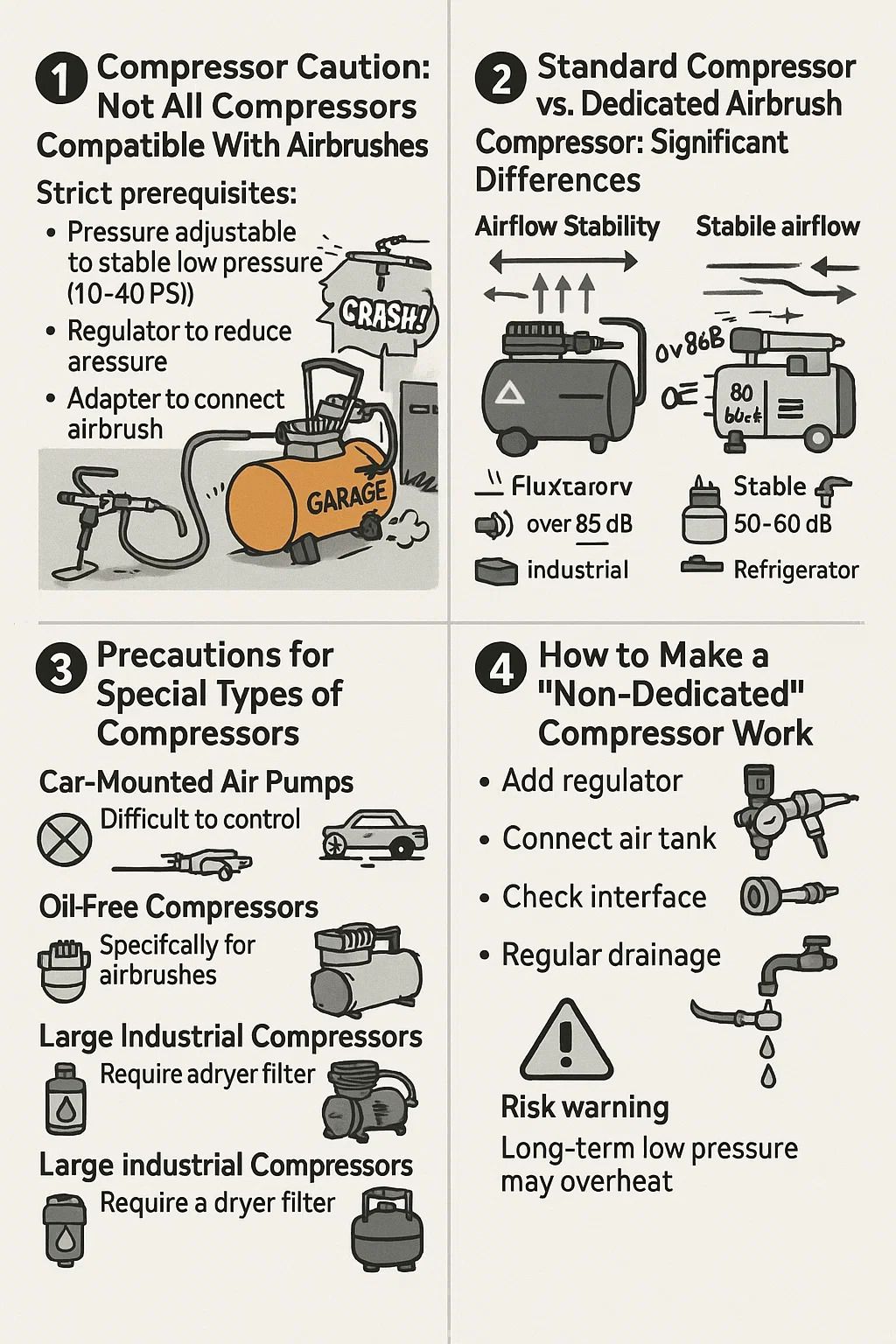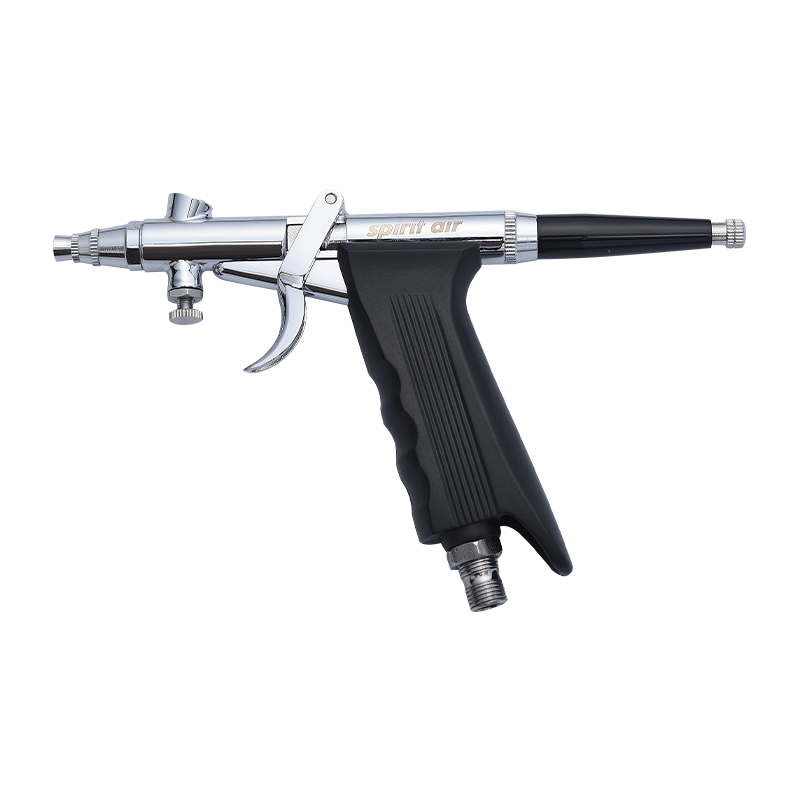Nov 11,2025
Here's a simplified answer to the question, "Are all compressors compatible with airbrushes?"
Content
1. Theoretically, all can be used, but there are strict prerequisites:
• Pressure must be adjustable: Airbrushes require stable low pressure (generally 10–40 PSI). For example, painting details might only require 15 PSI, while spraying primer might require 30 PSI. Ordinary tool compressors (like those used for nail guns) often have a minimum pressure exceeding 50 PSI, which will blow away the paint if used directly.
• Accessories are essential:
Regulator: Controls output pressure to prevent excessive pressure.
Adapter: The airbrush and compressor interfaces may be incompatible (e.g., Iwata interface vs. universal interface), requiring an adapter.
• Example: Using a large compressor airbrush in a garage? First, install a regulator to reduce the pressure to 20 PSI, then add an adapter to connect the airbrush—otherwise, spraying directly will result in a crash.
2. Standard Compressor vs. Dedicated Airbrush Compressor: Significant Differences
While they can be used after modification, the differences in daily experience are obvious:
• Airflow Stability: Dedicated airbrush compressors usually have an air tank, resulting in a stable airflow and smoother spray patterns.
Standard compressors (especially those without an air tank) experience pulsating airflow fluctuations, leading to uneven spray patterns or ink splatter.
• Noise and Size: Airbrush compressors are designed to be quieter (around 50-60 decibels, like a refrigerator), while standard industrial compressors are noisier (over 85 decibels, close to a drill).
Standard compressors are bulky and take up space in a studio; airbrush compressors are compact and can be used on a desktop.
• Operating Costs: Modifying a standard compressor requires purchasing accessories (adjuster + connector), and the total price may exceed that of an entry-level airbrush compressor (such as the basic Sparmax model).
3. Precautions for Special Types of Compressors
Car-mounted air pumps: Pressure is difficult to control precisely, and there is no air tank → unstable airflow, only suitable for emergency practice, not for regular use.
Oil-free compressors: Airbrush-specific compressors are mostly oil-free to prevent oil from mixing with the paint; ordinary compressors using lubricating oil may contaminate the airbrush channel.
Large industrial compressors: These can power airbrushes, but require an additional dryer filter (to prevent moisture from mixing with the paint), otherwise water stains will appear in humid weather.
4. How to make a "non-dedicated" compressor work:
If you already have a compressor, you can try:
Add a regulator: Ensure the pressure is adjustable to the 10–40 PSI range.
Connect an air tank: Improve airflow pulse (a small air tank of about 1-3 liters is sufficient).
Check the interface: Purchase an adapter online (common sizes include 1/8" to 1/4").
Regular drainage: Open the valve at the bottom of the compressor air tank once a week to drain accumulated water and prevent rust.
Risk warning: Long-term low-pressure operation of ordinary compressors can easily overheat, potentially shortening their lifespan.







